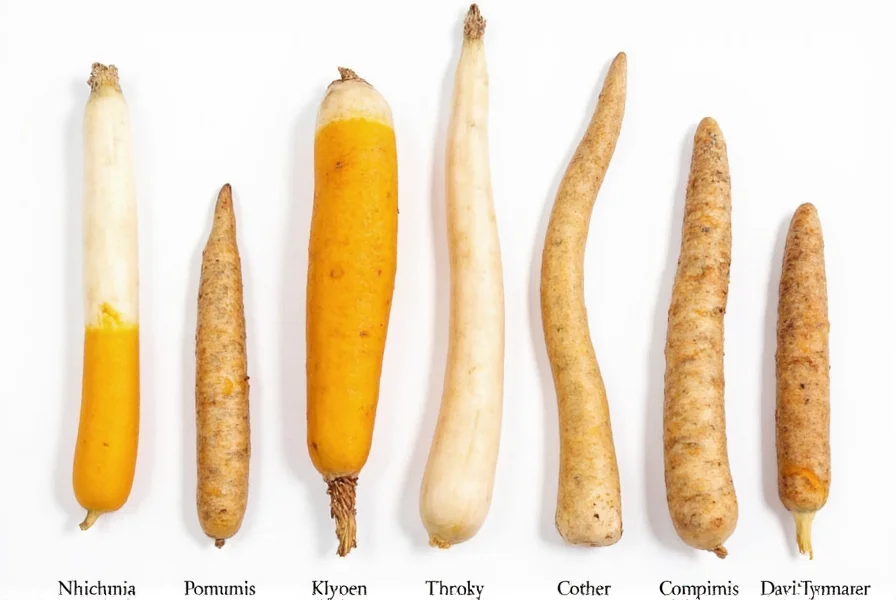The vibrant yellow-orange spice commonly known as turmeric has been used for thousands of years in traditional medicine and cooking across Asia. While "turmeric" serves as its widely recognized common name, the plant's formal scientific identification as Curcuma longa provides critical precision for botanical, agricultural, and scientific purposes.
Understanding Botanical Nomenclature
Scientific naming follows the binomial system developed by Carl Linnaeus in the 18th century, consisting of two Latinized terms: the genus name (Curcuma) followed by the specific epithet (longa). This standardized approach prevents confusion that often arises from regional common names, which can vary significantly across different cultures and languages.
For example, while Curcuma longa refers specifically to the turmeric plant cultivated for its rhizomes, other species within the same genus include Curcuma zedoaria (zedoary) and Curcuma aromatica (wild turmeric), which have different properties and uses despite their similar common names.
Classification of Turmeric
The complete taxonomic classification of turmeric demonstrates its biological relationships:
| Taxonomic Rank | Classification |
|---|---|
| Kingdom | Plantae |
| Clade | Tracheophytes, Angiosperms, Monocots |
| Order | Zingiberales |
| Family | Zingiberaceae (Ginger family) |
| Genus | Curcuma |
| Species | Curcuma longa L. |
The "L." designation after the species name indicates that Carl Linnaeus was the botanist who first formally described and named this species. This taxonomic precision becomes particularly important when researching turmeric's medicinal properties, as scientific studies consistently use the botanical name Curcuma longa to ensure clarity and accuracy.
Why Scientific Names Matter for Turmeric Research
When examining scientific literature about turmeric's health benefits, using the correct botanical nomenclature is essential. Researchers studying Curcuma longa are specifically investigating the compound curcumin and other constituents found in this particular species. Confusing it with other Curcuma species could lead to inaccurate conclusions about efficacy and safety.
This precision matters significantly for:
- Medical research on turmeric's anti-inflammatory properties
- Agricultural studies on optimal growing conditions
- Quality control in supplement manufacturing
- Botanical identification in conservation efforts

Common Misidentifications and Related Species
Several plants are sometimes confused with true turmeric (Curcuma longa):
- Curcuma domestica: Often used interchangeably with C. longa in older literature, but modern botanical consensus treats this as a synonym rather than a distinct species
- Curcuma aromatica: Known as wild turmeric or jangli haldi, this species has different chemical composition and medicinal properties
- Curcuma zedoaria: Sometimes called white turmeric, this is a completely different species with distinct characteristics
The confusion between Curcuma longa and Curcuma domestica represents a common point of uncertainty. While some historical texts treated them as separate species, contemporary botanical authorities including Kew Gardens' Plants of the World Online recognize Curcuma domestica as a synonym for Curcuma longa, not a distinct species.
Historical Context of Turmeric's Scientific Naming
The journey to turmeric's current scientific designation reflects centuries of botanical exploration. Early European botanists initially classified turmeric within the Amomum genus. It wasn't until 1753 that Carl Linnaeus established the genus Curcuma and designated turmeric as Curcuma longa in his seminal work Species Plantarum.
The specific epithet "longa" refers to the plant's elongated leaf structure. This naming convention followed Linnaeus's system of using descriptive Latin terms to highlight distinguishing physical characteristics of plants.
Practical Applications of Knowing Turmeric's Scientific Name
Understanding that turmeric's scientific name is Curcuma longa offers several practical benefits:
- Research accuracy: Ensures you're accessing studies on the correct species when investigating health benefits
- Gardening and cultivation: Helps obtain authentic planting material rather than mislabeled substitutes
- Supplement quality: Enables verification of product contents, as reputable manufacturers specify Curcuma longa on labels
- Academic writing: Required precision for botanical, agricultural, and medical papers
When purchasing turmeric supplements or plants, look for the designation Curcuma longa to ensure you're getting the authentic species studied for its potential health benefits. This becomes particularly important given the growing market for turmeric products and occasional instances of mislabeling.











 浙公网安备
33010002000092号
浙公网安备
33010002000092号 浙B2-20120091-4
浙B2-20120091-4